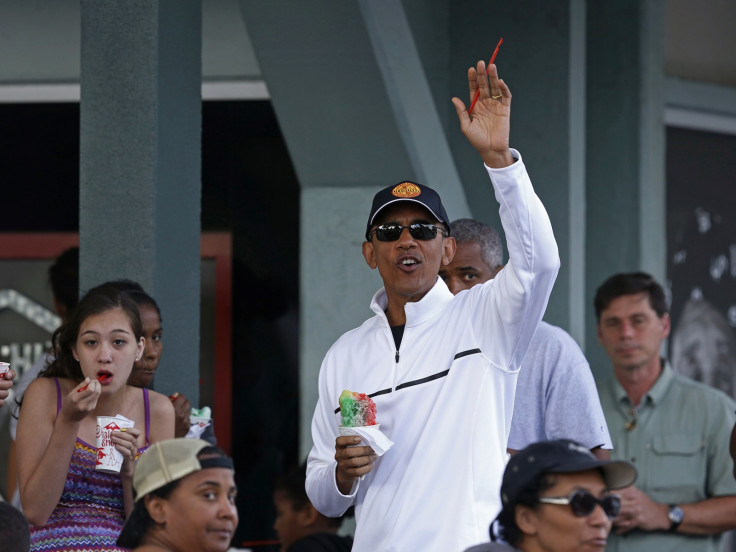Hawaii Statehood Day: Campaign for independence grows despite celebrations

Debate surrounds the public holiday which commemorates the day Hawaii became the 50th state of the United States. Controversy circles the 56th anniversary of Hawaii becoming the newest state of the USA on 21 August and there are calls for it to be removed as culturally insensitive to Native Hawaiians.
Independent activists are using the public holiday to gather support for Hawaiian sovereignty. Over the summer, the US Department of the Interior held a series of hearings inviting Native Hawaiians to comment on the formation of a federally recognised nation. According to analysis by University of Hawaii law professor Williamson Chang, 65% were in favour of federal recognition and 35% in favour of independence.
The push for US recognition of the sovereignty and government of the Native Hawaiian people was encouraged on 14 August when the Department of the Interior announced it will publish a draft rule that would allow Native Hawaiians to leverage that recognition.
Interior spokeswoman Jessica Kershaw told Civil Beat that it "will propose a rule that establishes an administrative procedure that the secretary would use if the Native Hawaiian community forms a unified government that seeks a formal government-to-government relationship with the United States."
The Interior Department heard from many islanders who claimed that Hawaii is still a nation and that Americans are occupiers who should leave.
History of Hawaii
Unified in 1810 by King Kamehameha I, Hawaii was recognised internationally as an independent country in 1843. Fifty years later, the Kingdom of Hawaii had treaties with nearly all the sovereign states in existence, including five with the US.
Overthrow of the Kingdom of Hawaii
A coup d'état took place on 17 January 1893 in the Hawaiian Islands, in which anti-monarchical insurgents within the Kingdom of Hawaii, composed largely of US citizens, engineered the overthrow of its native monarch, Queen Lili'uokalani.
The Queen was was overthrown by sugar businessmen backed by a company of US Marines. US President Grover Cleveland called this unauthorised intervention an "act of war", withdrew the proposed annexation treaty and agreed to reinstate Lili'uokalani.
When William McKinley took office as US president in 1897, he attempted to pass a second treaty but failed. A year later, he and the annexationists in Congress decided, in the words of Congressman Thomas Ball of Texas, "to do unlawfully that which can not be done lawfully". In 1898 they annexed Hawaii via joint resolution. It was declared as a "necessary" navy base for the Spanish-American War. During World War II, Oahu served as the command post for the US operations in the Pacific. Large portions of Hawaii were turned over for the US military bases.

Hawaii was initially reconstituted as an independent republic, but the ultimate goal of the revolutionaries was the annexation of the islands to the US, which was finally accomplished in 1898.
Annexation
The formal ceremony marking the annexation was held at Iolani Palace on 12 August 1898. Almost no Native Hawaiians attended, and those few who were on the streets wore royalist ilima blossoms in their hats or hair, and, on their breasts Hawaiian flags with the motto: Kuu Hae Aloha ("my beloved flag").
Most of the 40,000 Native Hawaiians, including Liliʻuokalani and the royal family, shuttered themselves in their homes, protesting what they considered an illegal transaction.
"When the news of Annexation came it was bitterer than death to me", Lili'uokalani's niece, Princess Ka'iulani, told the San Francisco Chronicle. "It was bad enough to lose the throne, but infinitely worse to have the flag go down." The Hawaiian flag was lowered for the last time while the Royal Hawaiian Band played the Hawaiian national anthem, Hawaiʻi Ponoʻi.
Nearly 100 years later, in 1993, Congress issued a formal apology to the Hawaiian people for the overthrow.
Campaign for independence
Hawaiian sovereignty movement groups are political organisations seeking some form of sovereignty for Hawaii. They are focused on self-determination and self-governance, either for Hawaii as an independent nation or for people of whole or part native Hawaiian ancestry in an indigenous "nation to nation", similar to tribal sovereignty in the US.
"The cause of Hawaii and independence is larger and dearer than the life of any man connected with it. Love of country is deep-seated in the breast of every Hawaiian, whatever his station."
Lili'uokalani, Hawaii's last Queen
Some groups also advocate some form of redress from the US for the 1893 overthrow of Queen Lili'uokalani. The movement generally views both the overthrow and annexation as illegal.
ALOHA
The Aboriginal Lands of Hawaiian Ancestry (ALOHA) sought reparations for Native Hawaiians on ceded lands by hiring a former US congressman to write a bill that, while not ratified, did spawn a congressional study.
Nou Ke Akua Ke Aupuni O Hawaii – The Kingdom of Hawaii
Edmund Keli'i Silva Jr announced a vision for restoration and sustainable development, requesting $2.5bn (£1.6bn) to implement the plan. On 27 October 2003, the Constitution of the Kingdom of Hawaii was published. Many people recognise the leadership of King Edmund K. Silva, Jr as he continues to address the issues that are preventing sovereignty with world and national leaders and to achieve independent nation status.
Ka Lāhui
The organisation is considered the largest sovereignty movement group, claiming a membership of 21,000 in 1997. One of its goals is to reclaim ceded lands. In 1993, the group led 10,000 people on a march to the Iolani Palace on the 100 year anniversary of the overthrow of Queen Lili'uokalani.
Activism among many Native Hawaiians has increased in the wake of blockage of construction of the Thirty Metre Telescope on top of Mauna Kea on the Big Island. Locals say the mountain, which is a sacred site, has been desecrated.
On 9 August, thousands of Native Hawaiians and other residents marched in Waikiki for the Aloha Aina Unity March, by far the largest demonstration in Hawaii since protests began last spring over telescope construction.
© Copyright IBTimes 2025. All rights reserved.




















